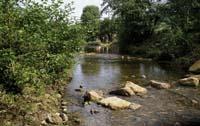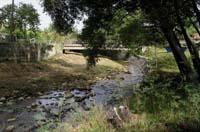Measures to improve the ecology of the rivers of Bizkaia

The Department of Environment of the Provincial Council of Bizkaia has launched several projects and studies for the conservation of river ecosystems. The Environmental and Hydrological Action Plan, for example, responds to the need for recovery of several rivers vizcaínos. In fact, as in the environment in general, human influence is also evident in the rivers, which has altered the natural conditions of the rivers vizcaínos.
The Action Plans analyze the anomalous situations that can be found in the route of the waters of the rivers and collect measures to recover the ecological quality of the rivers. Likewise, it must contribute to the improvement of the hydromorphological and ecological state of the waters of Bizkaia.
For this purpose, 74 areas of the rivers of Bizkaia have been analyzed. According to the problems detected in each zone, the experts of the Bizkaia Provincial Council propose actions such as hydraulic and hydrological stabilization, the improvement of habitats, the adaptation to social use, the action plans in the watersheds and the specific actions in infrastructures.
Last April and May, for example, the surroundings of Sopelana were recovered, where the rivers Gobela and Torre converge. In the Estepona River, in the area of Bakio, have begun the work of correction, stabilization and prediction of erosive processes, as well as improvement of the vegetation and landscape of the place.
In addition, it is working on the prevention and resolution of erosion that the river can generate on its margins. In this sense, it will proceed to the elimination of the inert waste existing in the riverbed and on its shore, to avoid its fall to water during these erosive processes.

In addition, they will incorporate vegetation on the banks of the rivers. For this purpose they will use species adapted to the environment and that do not break the balance of the ecosystem. As a result, it will improve, among other things, the biological capacity of the soil and the quality of the waters.
Barriers in the course of the waters
For years, the sanitation of the basins has been taken care of, but now they have realized that it is not enough. That is, a good quality of the water does not guarantee the recovery of the habitat of these waters. Other factors must be taken into account. One of them, and perhaps one of the most important, is the presence of dams and dams on the riverbed. In addition, at present, many of these dams and dams are not used and are an obstacle to species migration.
The excess of dams, both large and small, disturbs the continuity of the rivers. As a matter of fact, waste dumping significantly reduces the quality of rivers and streams. All of them are only barriers to river ecosystems, transport and sedimentation mechanisms, species migration and barriers that make vegetation difficult.
For this reason, they have elaborated an inventory of dams and other obstacles that hinder the continuity of the rivers. An analysis of the current situation has been carried out and the possibilities of improvement have been analysed so that the fish of the rivers of Bizkaia can circulate freely and in a healthy environment. An inventory of 864 dams and small dams has been carried out and, after carrying out an impact study of all of them, a series of priority actions have been defined taking into account the breeding of fish in the rivers of Bizkaia.

On the one hand, the construction of parallel channels is planned to overcome the obstacles that prevent or hinder the normal traffic of species. To avoid dangerous areas such as hydroelectric power plant turbines, the construction of alternative steps has been proposed. The obstacles that are not currently used, in their entirety or to a large extent, will be eliminated or discarded, among other things, the dams that have been abandoned. In this sense, the flow of rivers will be determined.
All these actions will be implemented, for the moment, in areas in which the quality of water has improved or is in the process of improvement, and in all those areas in which favorable situations occur to the banks. It is planned to condition all these margins to recover the vegetation and adopt a different aspect to the landscape.
In the future, all these actions intend to carry out, among others, actions that will ensure the sinks of the dams and the quality of the water, eliminating waste and garbage.





